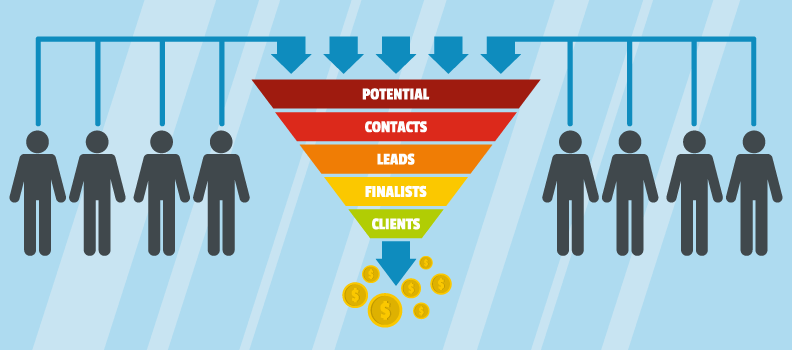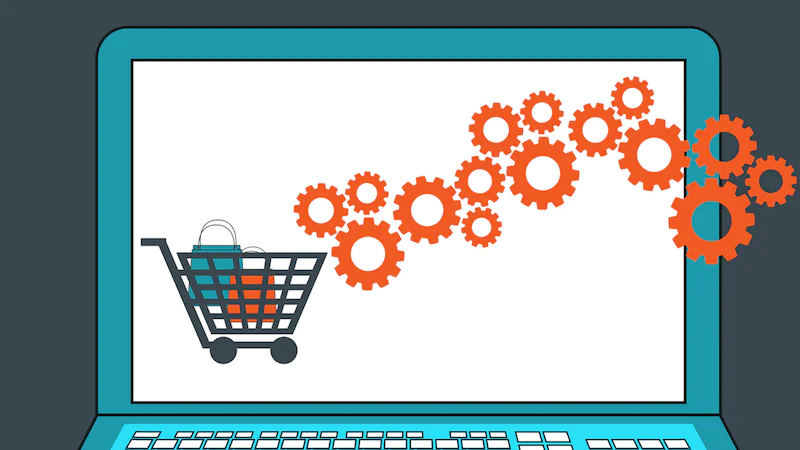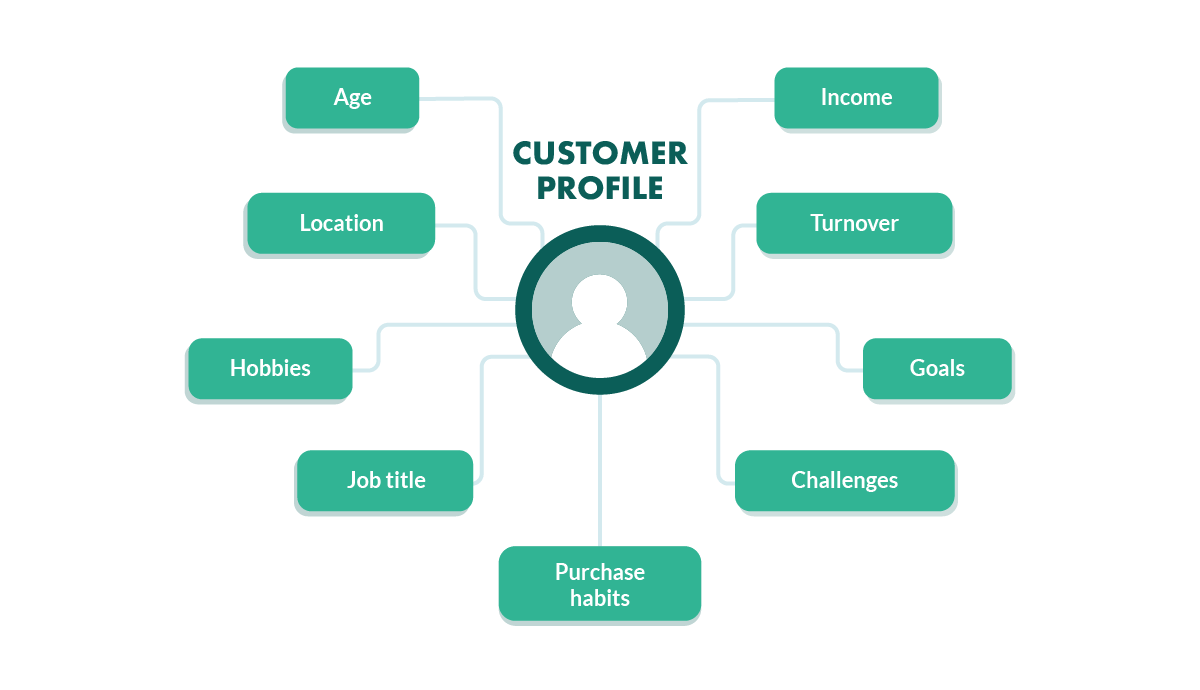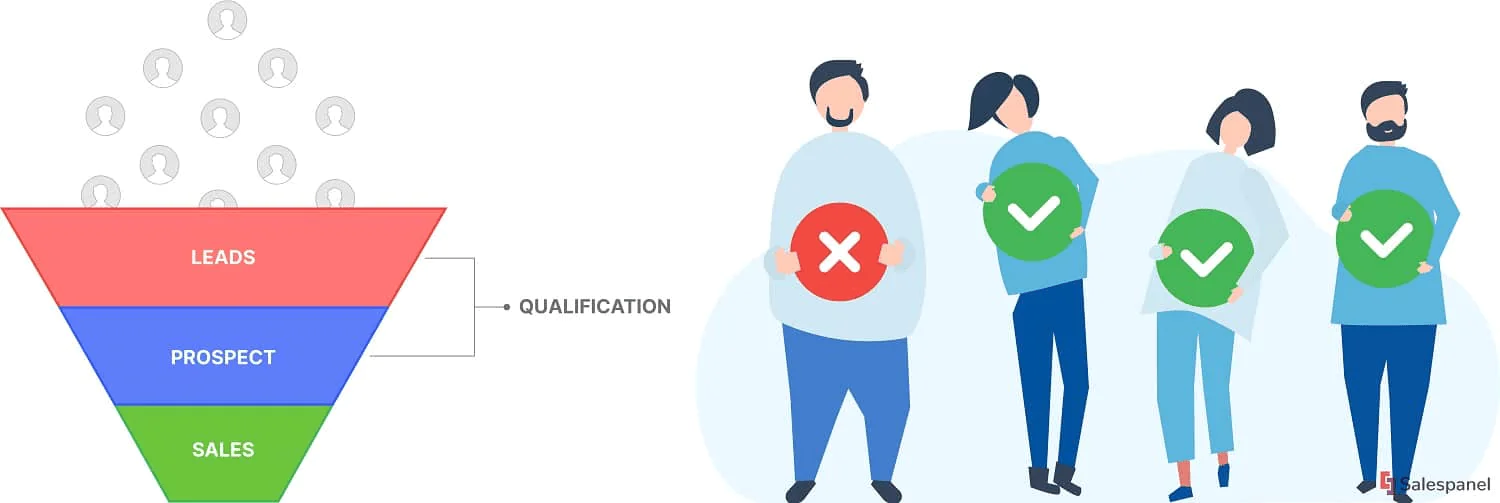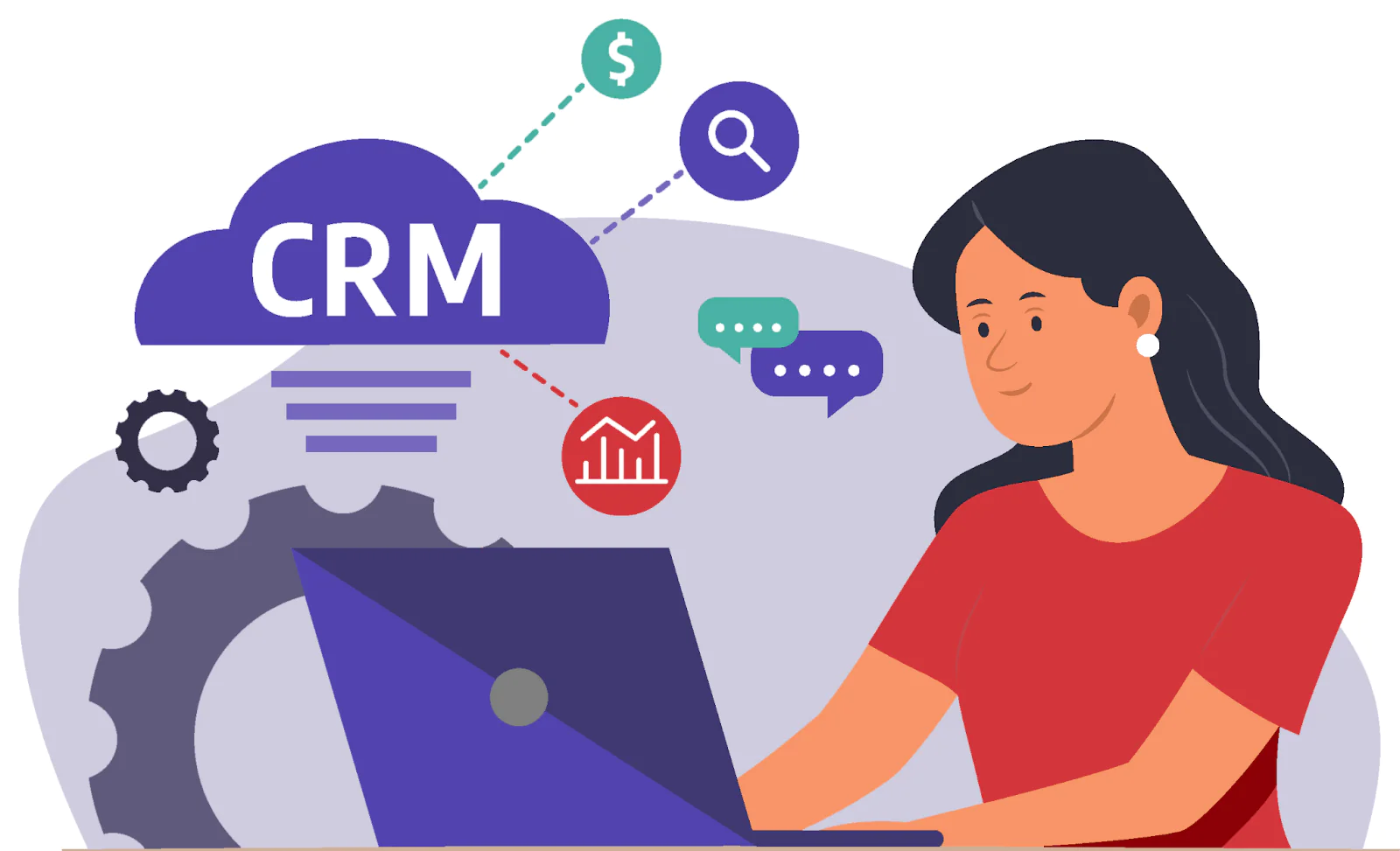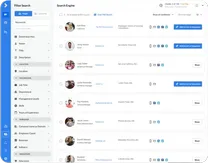Outbound marketing without an efficient prospect list rarely yields expected results. A prospect list is often used to contact leads with higher chances of converting into paying customers, but as easy as that sounds, it can be time-consuming and tedious.
Understanding how to build it correctly can reduce your workload and empower you to present unique sales pitches personalized to each prospect’s liking.
This article covers everything you must know about a prospecting list, guiding you through an easy five-step process to help you build yours.
What does Sales Prospecting mean?
Sales prospecting is a way to generate new business by identifying potential buyers or clients, called prospects, who might genuinely be interested in the services offered by your business.
The primary goal of sales prospecting is to make these ”prospects” enter a sales funnel and guide them through to convert them into paying customers. This is an essential part of the sales cycle for a business to grow its customer base and revenue.
Prospecting is the first step in any sales process, comprising five major steps:
- Identifying target audience
- Lead Generation and Qualification
- Outbound Marketing
- Lead Nurturing
- Follow-ups
What is a Prospect List?
A sales contact or prospect list is a collection of information about potential clients your sales personnel think might benefit from your business. This list makes it easy to reach out to them, allowing for more targeted marketing.
An effective prospect list includes additional information besides email addresses and phone numbers, which helps determine your ideal customer profile (ICP), which may be:
- Industry
- Company
- Job Title
- Company Location
- Company Size
You can include any other information you can get your hands on, like a company’s investors, goals, or problems, which will help in understanding them better so you can provide a solution to them.
Prospect lists have been confused with lead lists for a long time, but there’s a significant difference between the two.
Lead Lists vs Prospect Lists
Building a dedicated prospect list can benefit you in several ways.
Advantages of Building a Prospect List
Your sales prospect list can help you communicate with qualified leads in an effective and structured manner and refine your strategy accordingly so your teams can grow and evolve. Here are the significant benefits of having one:
Easy Targeting
A sales contact list can provide data on which lead sources, channels, and methods are working best, which helps target the best ones and enhance the overall lead generation process.
It also provides enough clients in the sales pipeline, so you don’t have to worry about losing them anywhere, as they can be replaced quickly.
More Conversions
Prospects are people who have already shown some interest and engagement in your business. This means converting them into paying customers is easy, giving you a higher return on investment (ROI.)
It also helps reduce cost per acquisition significantly, making your business more profitable.
Better Management
Building a list allows for systematic management that allows you to track interactions, preferences, and stages of the buying process of each prospect. It also helps in avoiding overlooking valuable leads.
Easy Scalability
When you have a list curated, it becomes easier to scale your campaigns. Adding new prospects into your pipeline becomes easy as your business grows and expands into new markets.
You can reach a larger audience without impacting your operational costs significantly.
Competitive Advantage
An effective contact list gives your business a competitive advantage over others. It can easily help you capture more markets and make your business a preferred choice for customers.
Now, let’s discuss the steps in building an effective prospect list.
5 Steps to Build a Prospect List
A prospect list helps establish a concrete customer database, significantly reducing the time spent sorting and communicating with prospects. It also provides plenty of information about your prospects, helping personalize your outreach and making it more effective.
Follow these steps to build an effective sales contact list:
Define your goals and Ideal Customer Profile (ICP)
Defining goals and an ideal customer profile is essential in any sales process. These goals act as guiding lights, shaping your actions and strategies. Are you looking to increase sales, expand your market, or launch a new product?
Predefining your goals directs the entire prospecting process and helps measure your progress. Similarly, ICP provides a detailed description of valuable customers beyond basic contact information. It consists of details like:
- Industry
- Company Size
- Buying Behavior
- Demographics
- Pain Points
Defining ICP before researching allows you to focus on promising prospects, ensuring you are not wasting money or resources on leads less likely to benefit from your services.
Gather Potential Leads
Once you’ve defined your goals and ICP, you must research the market to identify and gather potential leads matching your ideal customer profile. This involves collecting data on companies or individuals who fit your criteria.
Here are some methods that can be used to identify and gather leads:
- Referrals
Referrals are recommendations from your existing customers, partners, or contacts. Word-of-mouth marketing works better than other forms of advertising as it comes from friends and family.
When someone recommends your product or service to others, it displays a strong interest or need.
- Events
Events are a great way to build relationships with industry experts and people specific to your industry.
Improve socialization to network with participants and exchange contact information. Once you’re successful, follow up with them to guide them effectively through the sales funnel.
- Content Marketing
Content marketing is an easy and excellent way to market informative content about your brand that relates to your target audience. The content can be marketed through blogs, videos, whitepapers, and more, utilizing different channels to target leads effectively.
- Email Outreach
Email outreach is the most popular way to attract and capture leads. When you have a list of companies or individuals (decision-makers) you wish to target, this is the most effective way.
Remember to research the company/ individual well to craft emails according to their liking and use tools that track basic click-through, engagement, and response rates to continuously improve your strategies.
You can use one or a combination of these to collect information on your leads based on your requirements and preferences. Ensure you validate the contact info collected using a reliable tool early on to avoid any unexpected losses later.
Segment Leads
Segmentation involves categorizing leads into specific categories or segments, allowing you to effectively target and personalize communication with each segment. Not all leads are created the same.
A small business will have different priorities as compared to an MNC. This requires a specific allocation of resources and prioritization of leads more likely to convert.
Criteria for segmentation vary depending on your industry and business but can widely include:
- Geographic location
- Firmographics and demographics
- Lead source
- Purchase Intent, etc.
Qualify leads into prospects
It’s time now to qualify these leads into prospects. Once you’ve gone through all the above steps, analyze the results and identify leads that have enthusiastically engaged with your marketing.
Did they sign up for that newsletter, attend the webinar, or sign up for a free trial? These are the leads that are ready to be converted into prospects. You can follow the BANT methodology, which is all about the following:
- Does the lead have the budget to make a purchase?
- Is the lead in an authoritative position to make a decision?
- Does the lead need this service right now?
- Does your service fit into their timeline currently?
In this step, it’s also essential to research whether the lead is considering the competition’s offerings and what you can do to stand out. This will help you categorize ”hot.” ”warm,” and ”cold” leads.
Hot leads check all the boxes, warm leads require little nurturing, and cold leads are the ones you must let go of to save money, effort, and resources.
Invest in a good CRM platform to organize and track
A CRM helps manage and organize your prospect list. You can store all your data like contact details, communication and purchase history, and any other relevant information in one place to access it easily.
They store this information into different categories as you segment them, so you can automate your workflows as needed.
They also allow you to track and analyze your campaign’s performance, schedule follow-ups, and trigger responses depending on actions taken by prospects.
CRM platforms automate most of your tasks and track leads as they move through the sales funnel so you can easily identify which ones to nurture and which to remove.
They also scale with you as your business grows so you can keep working without losing efficiency or data.
Building and maintaining a prospect list is a continuous process, and a well-constructed one lays the foundation for healthy and long-lasting customer relationships.
If you, by mistake, receive outdated or inaccurate contact information from your leads and realize this later in the sales process, it can lead to a significant loss of wasted time and resources.
Swordfish AI is a contact data provider and prospecting platform that solves this issue with its massive database of 3.5 billion profiles containing accurate cell phone data and premium business emails. Let’s see how:
Prospect Like Pro With Swordfish AI
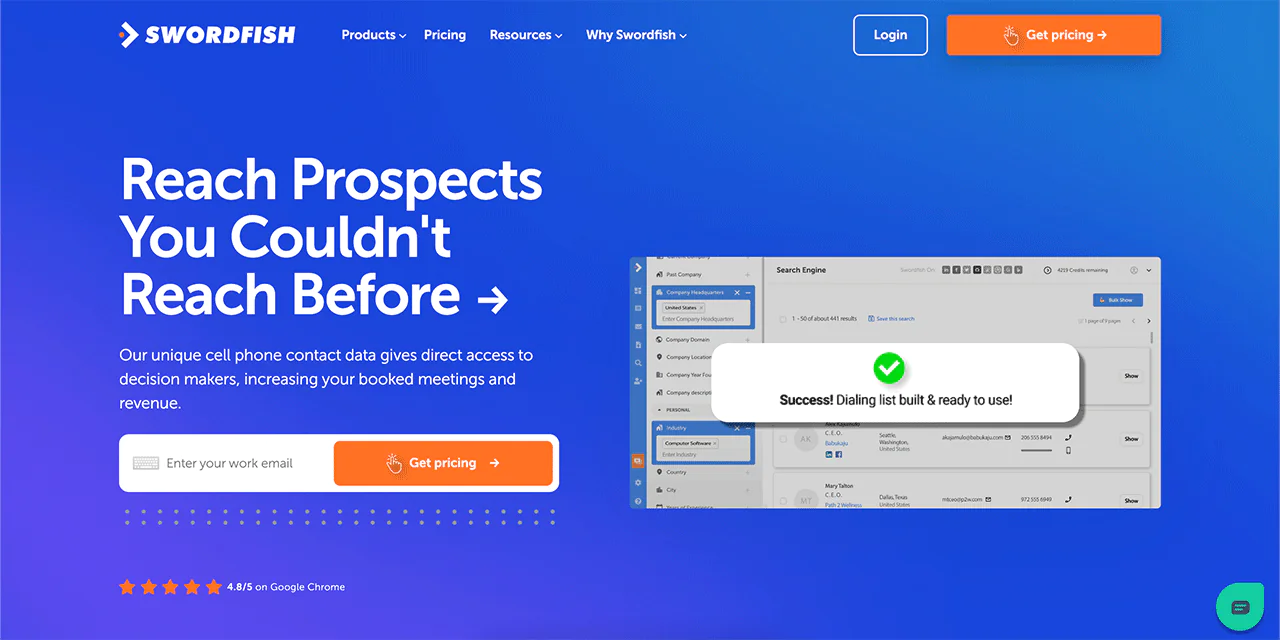
Swordfish is a powerful prospect finder platform that lets you find your lead’s contact information by searching for them in bulk and individually with its advanced filtering for pinpoint accuracy.
It collaborates with 150+ live data providers to provide the most accurate and up-to-date contact info, which is double-checked for line connectivity and deliverability. Swordfish is trusted by 50,000 leading companies worldwide, like Uber and Accenture.
Swordfish Features
Swordfish can help you reach prospects you couldn’t reach before with these features:
Chrome Extension
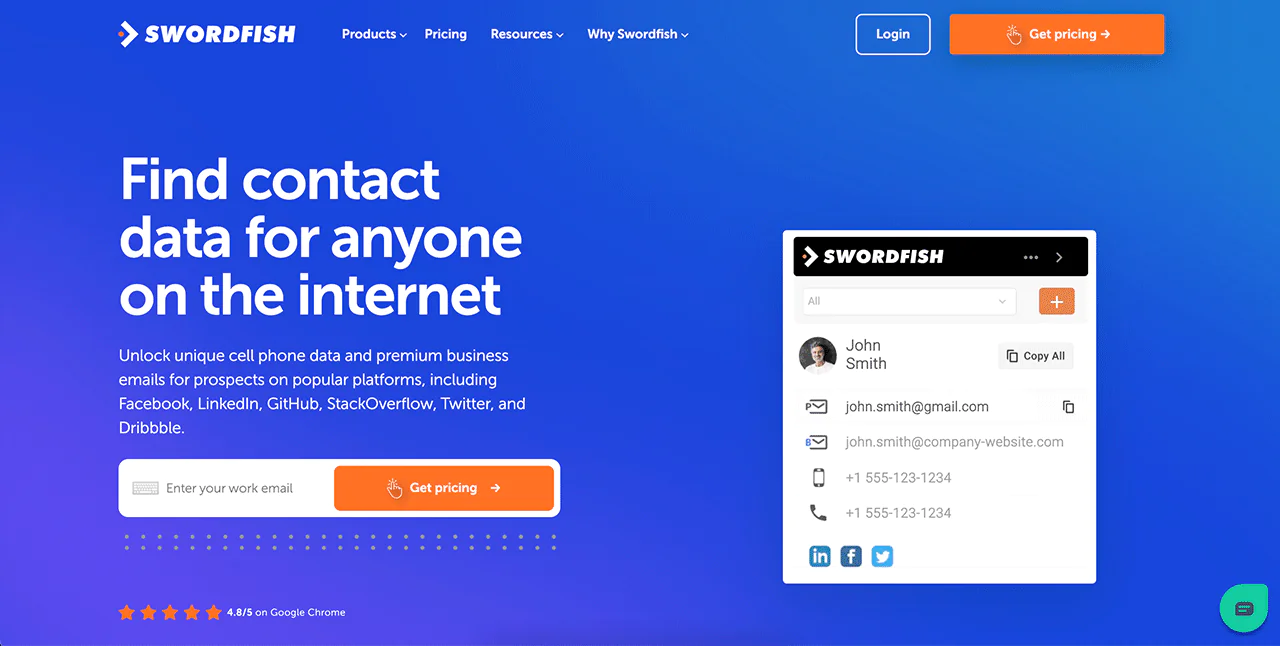
Swordfish’s highest-rated Chrome extension on Google lets you find prospects online whose contact data is verified from multiple sources like LinkedIn, Twitter, Facebook, Dribble, GitHub, StackOverflow, Google, and Bing.
Prospector
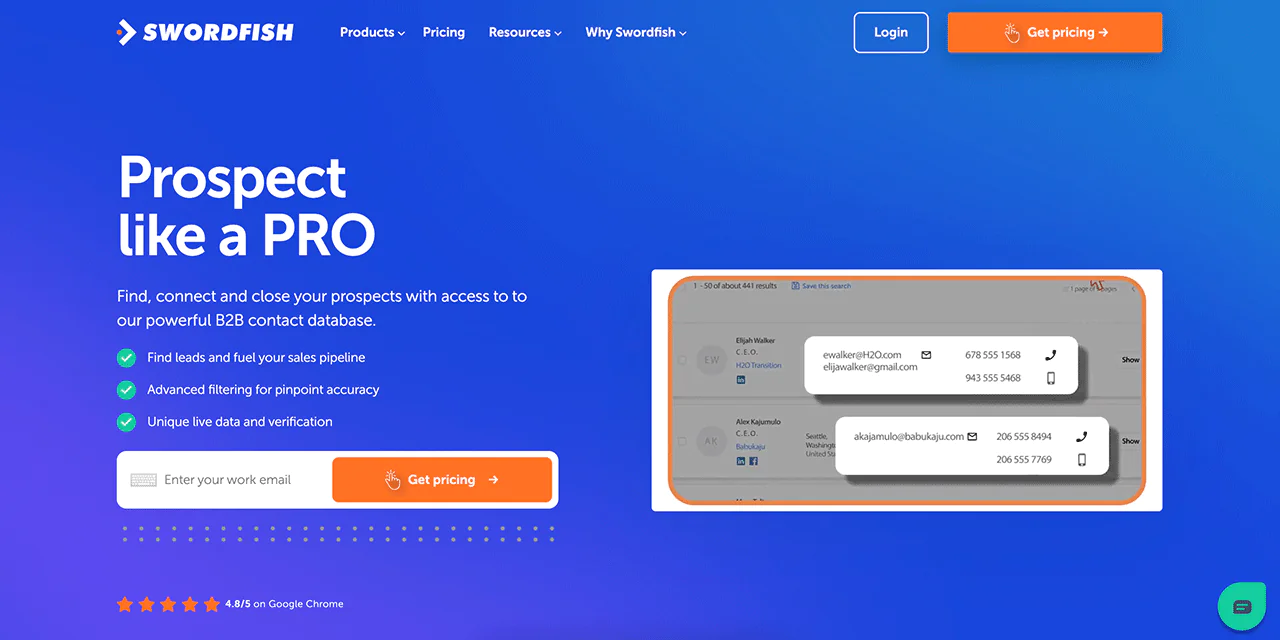
The prospector helps fuel your sales pipeline in bulk and create dialing/ email lists in seconds with advanced filters and real-time updates with live data partners.
File Upload
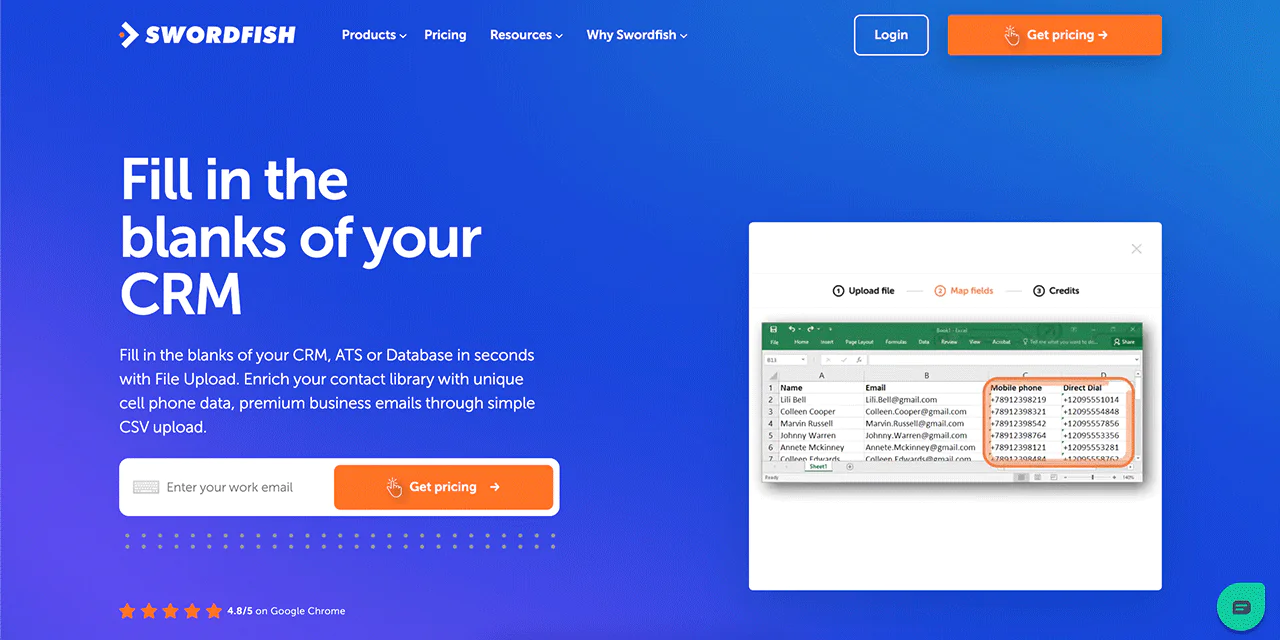
You can upload a CSV of your contact data to fill in the missing details of your prospects with the file upload feature. You can also select the amount of credits to optimize your spending.
Reverse Search

Reverse Search lets you search for anyone by their name, company, job title, location, and more.
API
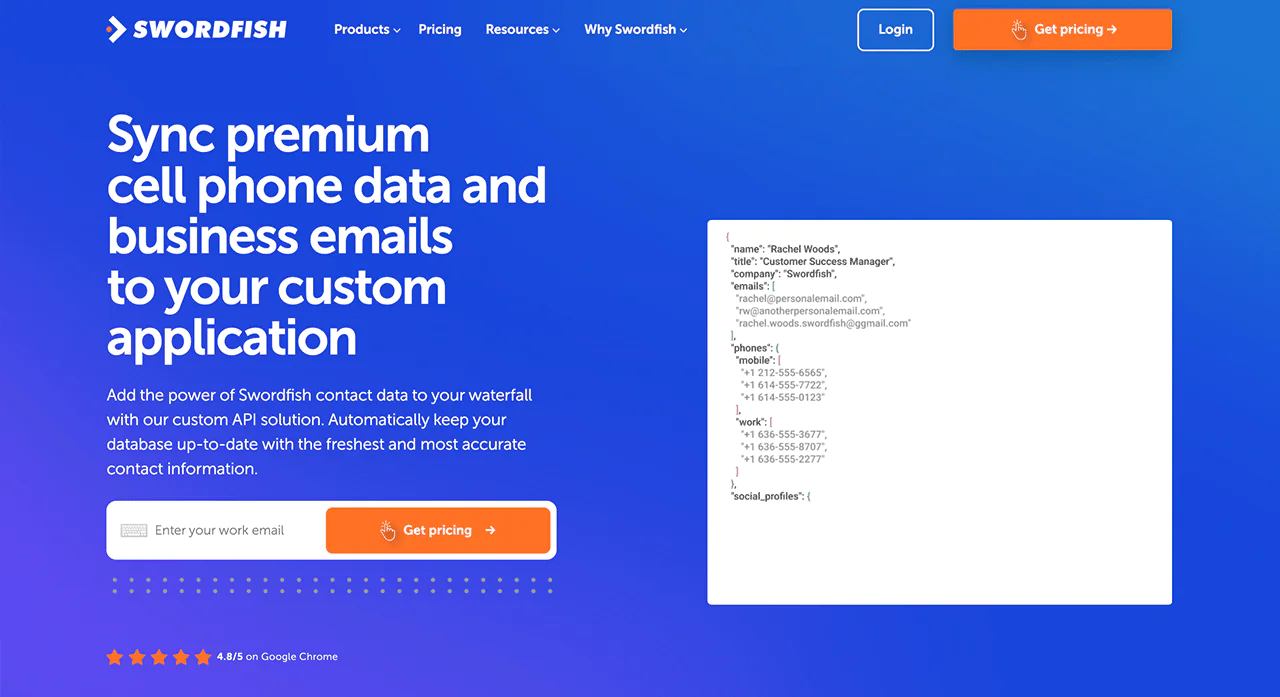
Swordfish allows you to sync premium cell phone data and business emails to your custom application with its API.
Swordfish also provides buyer intent data from lead provider Bombora, using machine learning and AI algorithms that provide insights into company buying signals.
It relieves your sales reps from manual work by providing 80% accuracy on cell phone data and over 95% accuracy on email data.
Conclusion
A prospect is much different from a lead, and building a prospect list helps build a strategic plan before beginning with marketing to make it more efficient. Our five steps to building a sales contact list provide a simplified guide on building one to minimize inaccuracies.
A sustainable and worthy list requires effort, smart work, and good-quality tools that make your work easier. Swordfish AI is a leading contact finder platform that collects and provides unique cell phone and email data of your leads verified in real-time to ensure accuracy.
Our game-changing suite of tools helps supercharge your sales pipeline and find leads in bulk. Claim $500 worth of data for free today and give your sales reps the power to sell.

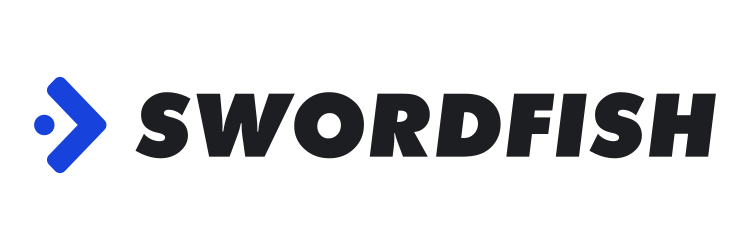
 View Products
View Products


